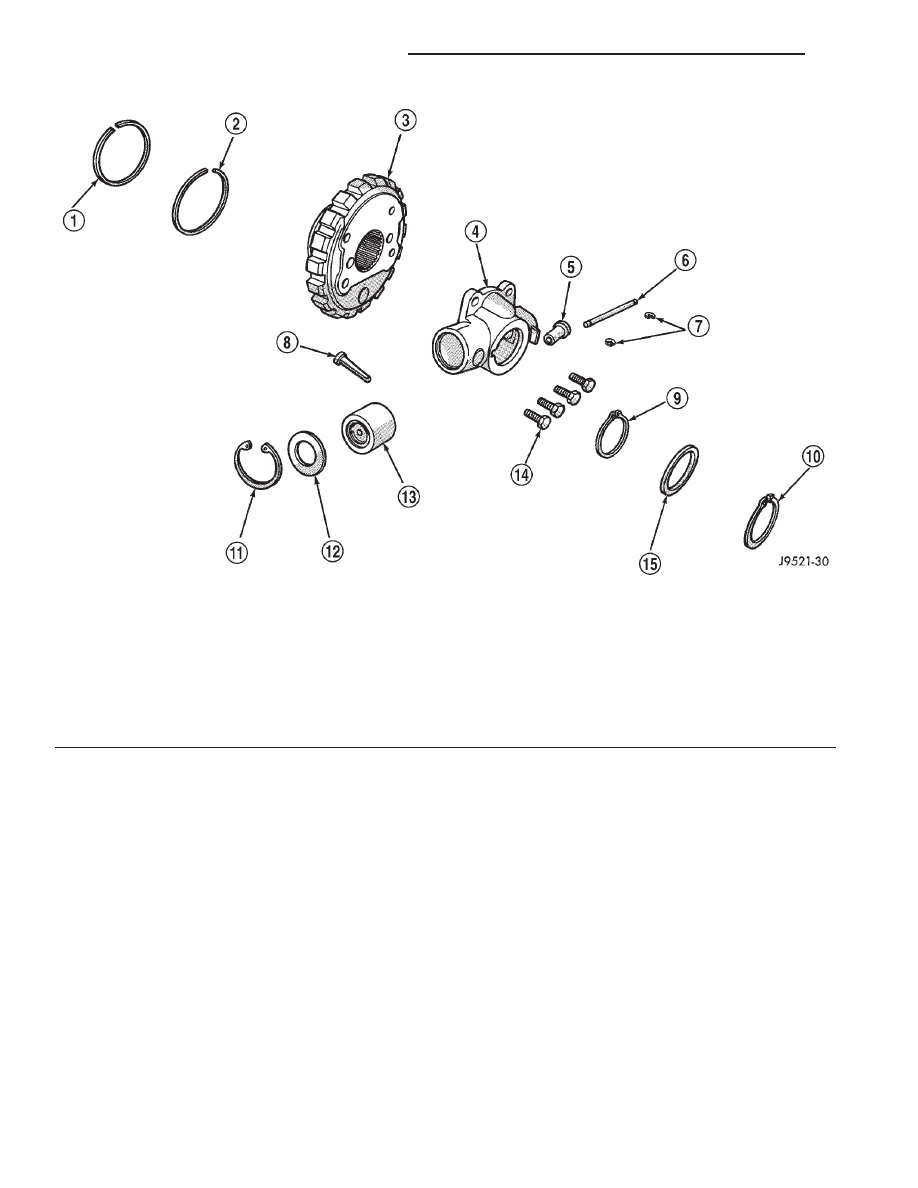Jeep XJ. Manual - part 414

Clean the valve body components in a parts clean-
ing solution only. Do not use gasoline, kerosene, or
any type of caustic solution. Dry the parts with com-
pressed air. Make sure all passages are clean and
free from obstructions.
NOTE: Do not use rags or shop towels to wipe off
valve body components. Lint from these materials
will adhere to the valve body components. Lint will
interfere with valve operation and may clog filters
and fluid passages.
Inspect the throttle and manual valve levers and
shafts. Do not attempt to straighten a bent shaft or
correct a loose lever. Replace these components if
worn, bent, loose or damaged in any way.
Inspect all of the valve body mating surfaces for
scratches, nicks, burrs, or distortion. Use a straight-
edge to check surface flatness. Minor scratches may
be removed with crocus cloth using only very light
pressure.
Minor distortion of a valve body mating surface
may be corrected by smoothing the surface with cro-
cus cloth. The cloth should be in sheet form and be
positioned on a surface plate, sheet of plate glass, or
equally flat surface. However, if distortion is severe
or any surfaces are heavily scored, the valve body
will have to be replaced.
CAUTION: Many of the valve body valves and plugs
are made of coated aluminum. Aluminum compo-
nents can be identified by the dark color of the spe-
cial coating applied to the surface (or by testing
with a magnet). DO NOT polish or sand aluminum
valves or plugs with any type of material, or under
any circumstances. This practice might damage the
special coating and cause the valves and plugs to
stick and bind.
Fig. 219 Governor Components
1 – SEAL RING (PLAIN END)
2 – SEAL RING (HOOK END)
3 – PARK GEAR
4 – GOVERNOR BODY
5 – GOVERNOR VALVE
6 – VALVE SHAFT
7 – E-CLIPS (2)
8 – FILTER
9 – SNAP RING (THIN)
10 – SNAP RING (THICK)
11 – SNAP RING
12 – RETAINER WASHER
13 – GOVERNOR WEIGHT ASSEMBLY
14 – GOVERNOR BODY BOLTS (4)
15 – WASHER
21 - 192
AUTOMATIC TRANSMISSION—30RH
XJ
CLEANING AND INSPECTION (Continued)